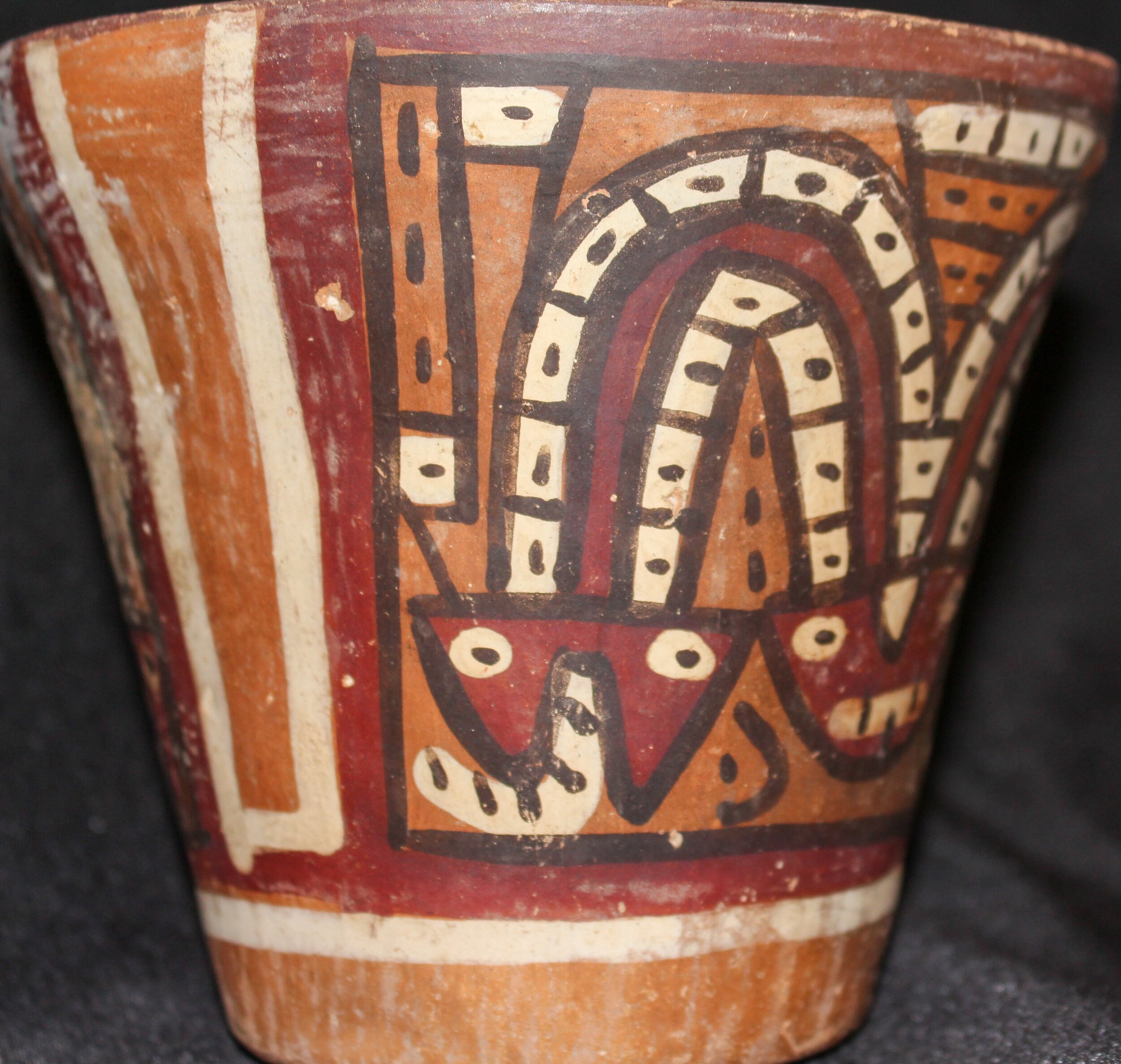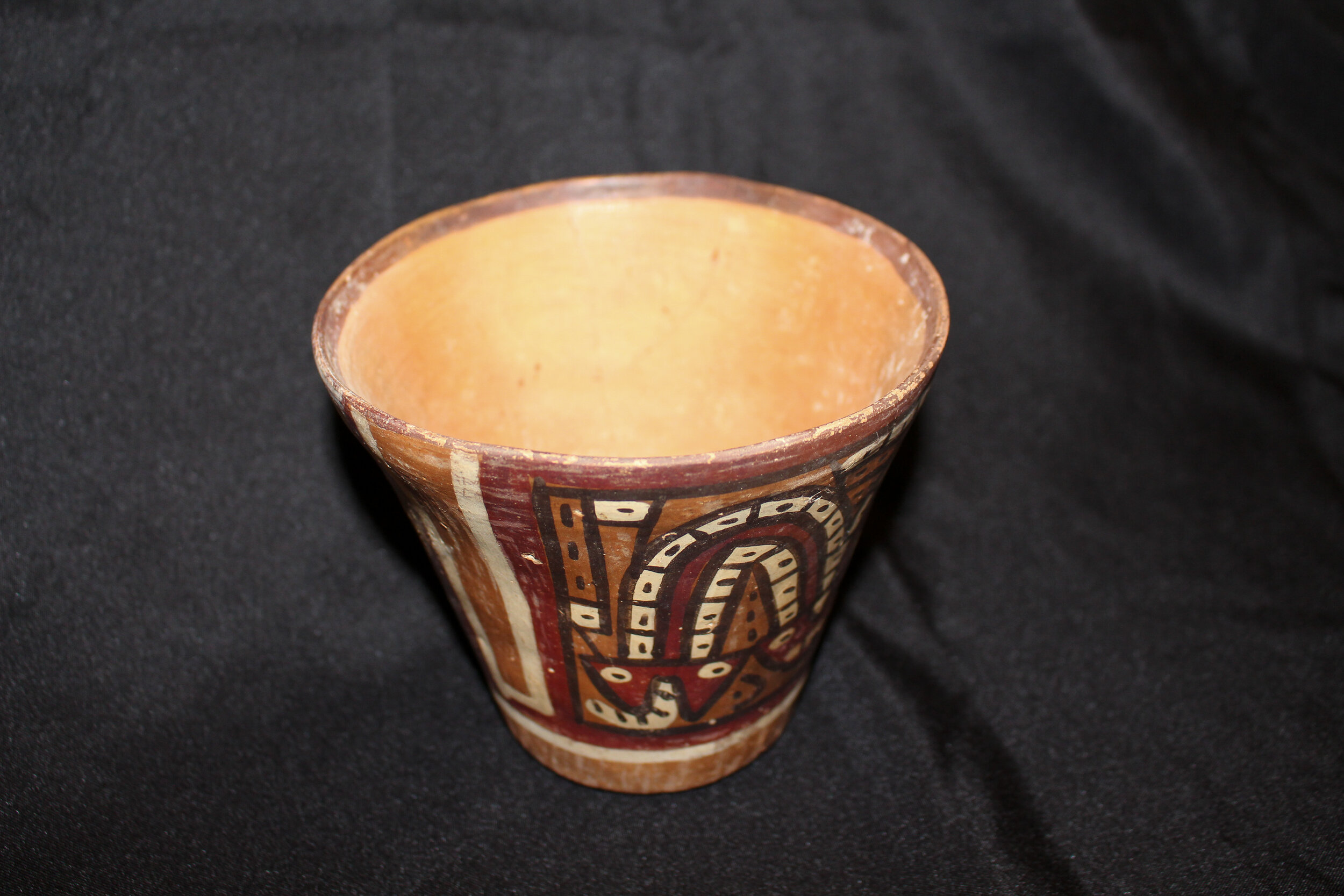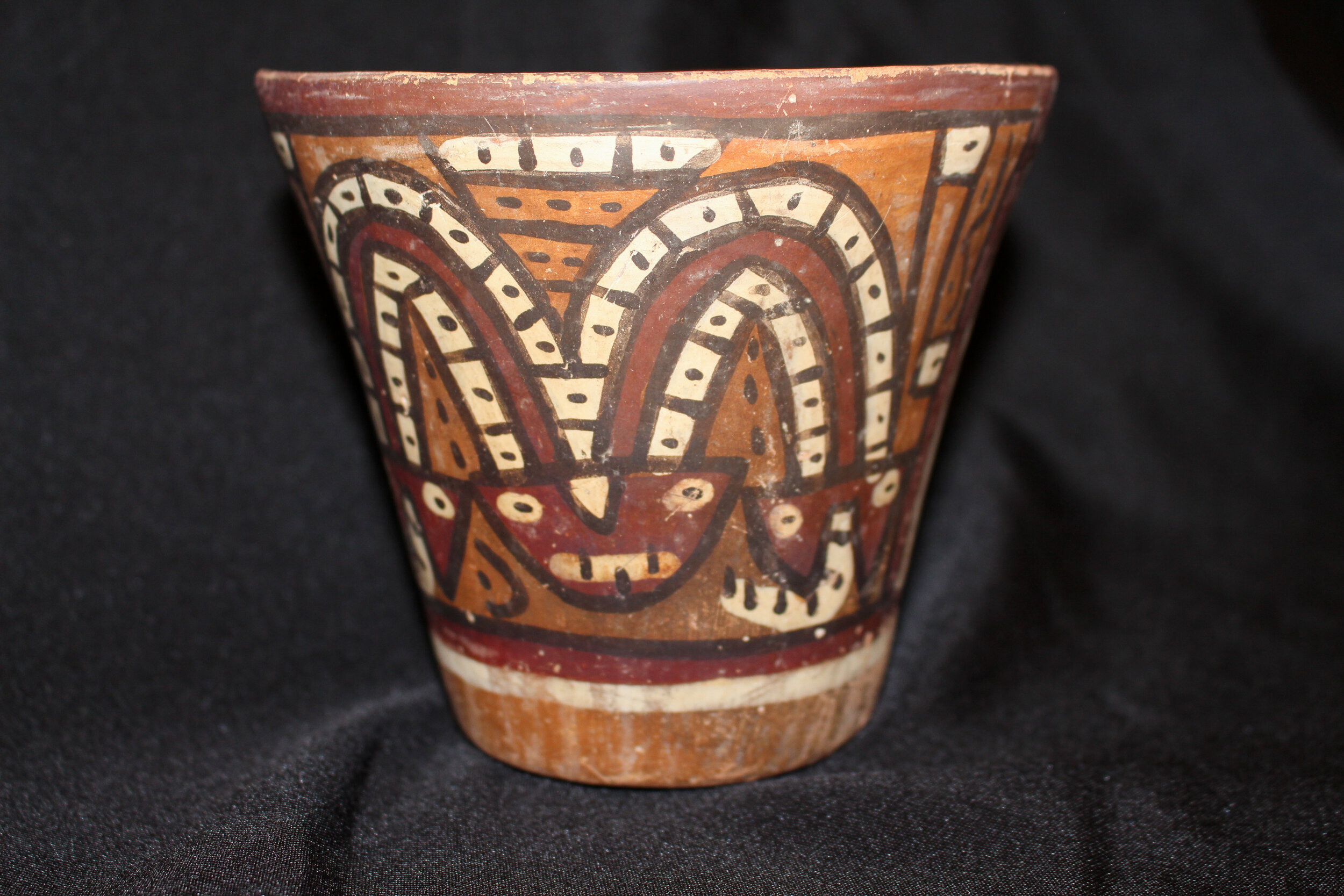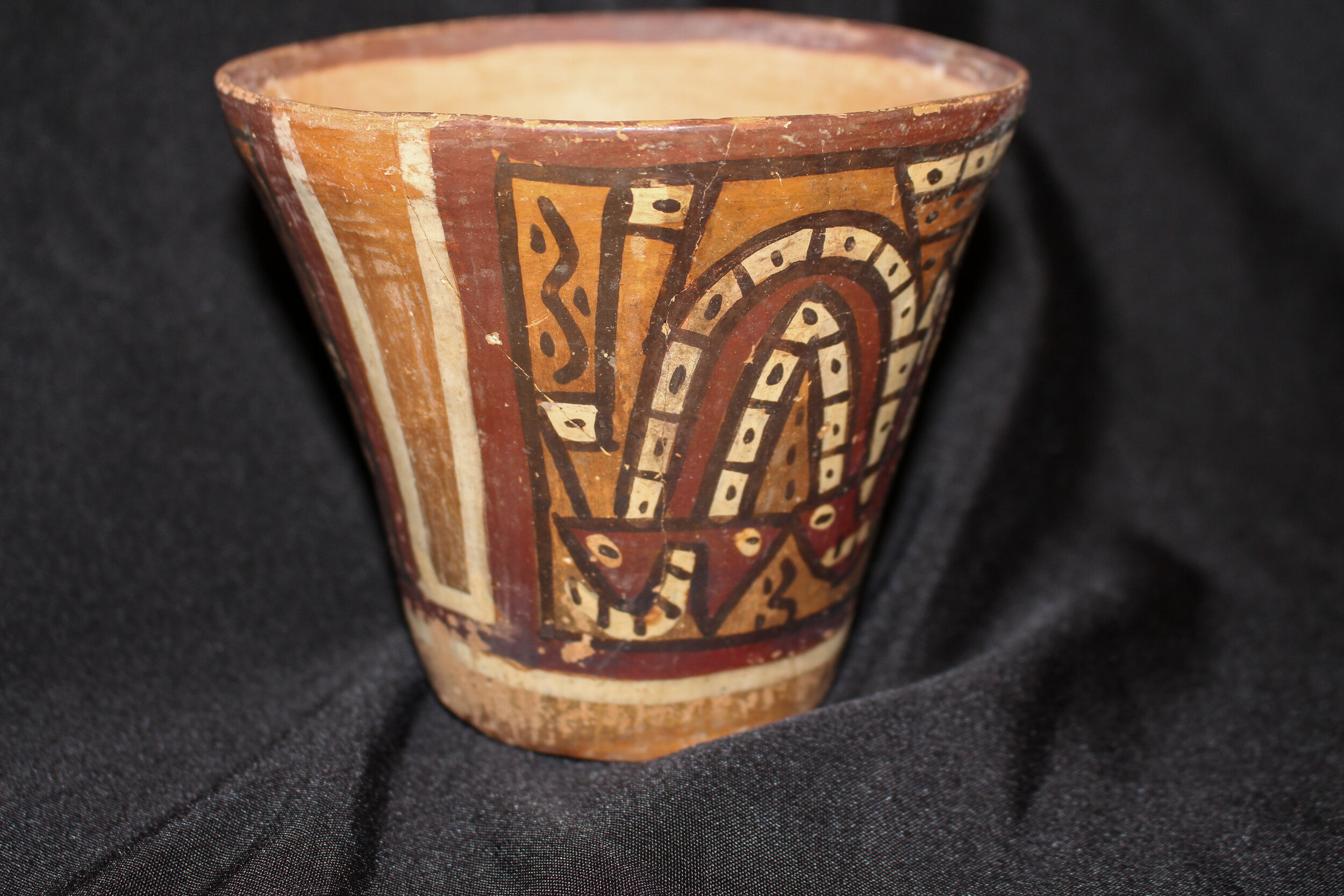Nasca Vase
When you hear the name Nazca, you may picture the mysterious Nazca Lines and the varying theories about their views on astronomy. Since their discovery in the 1920s, people have flocked to view these spectacular and mysterious landscapes to uncover it’s mysteries. While MONAH doesn’t have these geoglyphs in our collection, we do have a few pieces of their beautiful pottery. Pictured here, we have a small ceramic vase, still decorated with its red, white, black, and orange pigments. It’s dated to around 100-800 A.D.




Like many of the cultures surrounding them, their pottery techniques were exquisite. They range from depicting naturalistic to fantastical or supernatural scenes. For the Nasca people, it was their primary way of artistic and symbolic expression. The Nasca looked to previous traditions, but of course, added their own style and techniques. They introduced slip paints, which they painted before firing. Previously, the Paracas culture used resin paints, applying them after firing! Another difference is how they made the pigment. Previous cultures mixed minerals like hematite or cinnabar for red, or malachite for green, with the resins. But for slip paints, these minerals were finely ground and suspended in a thin clay solution, chemically binding to the vessel during the firing process. This technique ensured long-lasting wear that wouldn’t chip in the next wash. The Nazca were innovative and calculated in these techniques. They used a wide range of pigments, provided the right tints of color for each pot, and sometimes used 12 different tents for a single vessel! No other civilization’s ceramic style in Peru used the same variety of pigments as the Nasca. The polychrome painting is a distinguishing characteristic of the Nasca tradition.
The scene depicted here is likely a variation of their trophy head design or a person in an elaborate headdress. Nonetheless, the ‘figure’ is outlined in black, an interesting painting technique. This black outlining gives a sense of how they constructed the scene; colors were applied before the outline, crisping the design. It is an exciting point because, in modern-day Western cultures, we generally outline the design before coloring it in, for example, coloring pages. The Nasca did the reverse, which is a great way to catch forgeries!
Trophy head designs come from a long tradition of decapitation and ritual use of heads in the Andes as well as Mesoamerica. This seems brutal and obscene to modern views today, but at the time, it was a typical use of power and symbols. They performed this ritual either during or shortly after a battle. The Nasca, like other civilizations, used these heads as symbols of power and prestige. The iconographic display of these scenes varied and transformed over time, reaching across Central and South America. Other iconography of the Nazca people depicts mythical creatures, ritual settings, and animals like monkeys, serpents, and even killer whales, much like the Nazca Lines!
Blog by Jazlyn Sanderson
References:
Cartwright, Mark. "Nazca Civilization." Ancient History Encyclopedia. Last modified May 23, 2014. https://www.ancient.eu/Nazca_Civilization/.
Proulx, Donald A.. A Sourcebook of Nasca Ceramic Iconography: Reading a Culture through Its Art. Iowa City: University of Iowa Press, 2006. Accessed January 8, 2021.
Proulx, Donald A. “The Nasca Culture: An Introduction.” University of Massachusetts English illustrated transition of “Nasca: Geheimnisvolle Zeichen im Alten Peru,” Edited by Judith Rickenbach, Pp. 59-77. Zürich: Museum Rietberg Zürich, 1999.



This phenomenal ceramic figure you see here is a part of the Jama-Coaque tradition from 1,400-2,300 years ago! While much of the culture remains elusive, their powerful ceramic figurines tell their stories to us today.